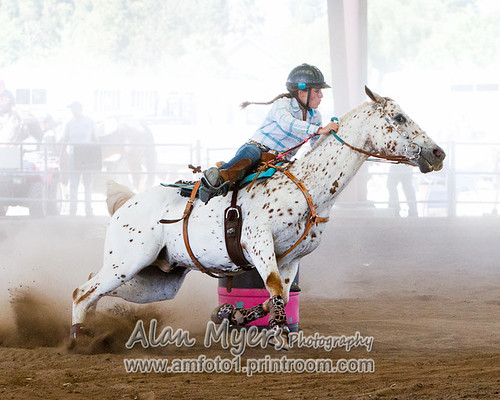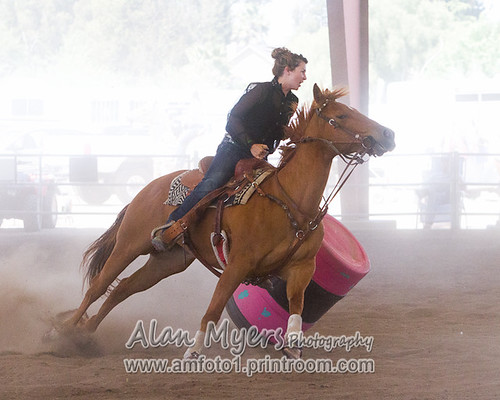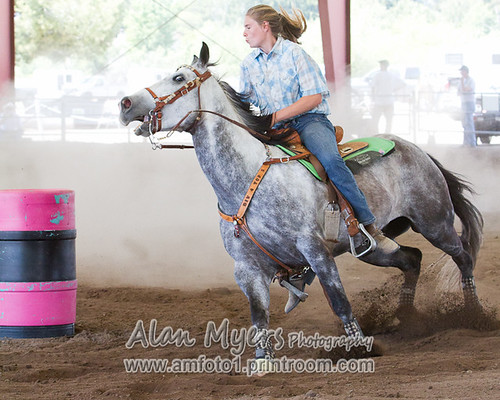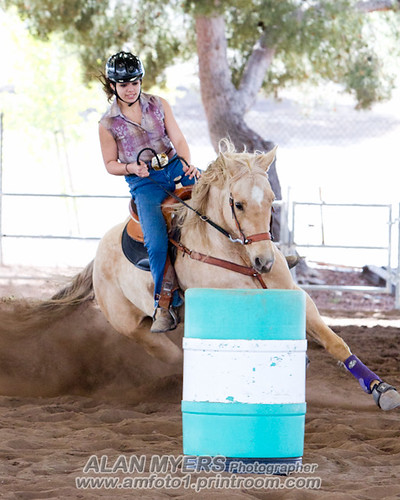An exercise in sensor cleaning
Sep 4, 2018 09:15:08 #
CHG_CANON wrote:
Going back to Oshkosh in the last week of July, I'... (show quote)
A Paul Harvey moment. “And now we know the rest of the story.”
It sounds like the previous owner wasn’t very careful. If it had been left sitting with no lens or body cap...
I keep a lens or body cap on my camera at all times.
Sep 4, 2018 10:35:46 #
i have been ignored on this site for a while now , but if you had used the hose hand of a vacuum cleaner , all that dust [ spots ]would have been gone in a few seconds .this is what i do on 3 body , 2 nik 1 pentax with 100% sucess .i guess just too easy !!!! .also , you need to clean the back site of the lenses before putting them back on .
Sep 4, 2018 10:41:17 #
agillot wrote:
i have been ignored on this site for a while now , but if you had used the hose hand of a vacuum cleaner , all that dust [ spots ]would have been gone in a few seconds .this is what i do on 3 body , 2 nik 1 pentax with 100% sucess .i guess just too easy !!!! .also , you need to clean the back site of the lenses before putting them back on .
I have often wondered about using a vac, seems like a good idea!
Sep 4, 2018 10:52:01 #
CHG_CANON wrote:
If I was a betting man, I'd lay my money on mirrorless cameras being more susceptible to sensor dust ... The sensor is just there, waiting for whatever wants to jump / fall into the body when the lens is off. ....
That might not be a safe bet.
There are many ways you can get dust on a sensor with or without a mirror and a couple of ways to get oil on a DSLR sensor.
A DSLR has a disadvantage of having a mirror flopping around kicking up dust and a mechanical shutter shaking it loose.
Both are vulnerable to environmental dust during lens changes or the air pumping that comes with zooming.
But one advantage of mirrorless sensors is that they are easier to clean because of the shorter flange to sensor distance.
Then there is still film - a clean new sensor with each frame.
Sep 4, 2018 12:09:07 #
I had a Sony A7r and currently have a A7Rii and A7Riii and don’t have any more dust problems with these bodies than my Canon dslr’s. I have gotten dirt on the sensors from changing lenses on some extremely dusty back roads but managed to correct the problem with a rocket blaster and the sensor vibrator in the camera.
Sep 4, 2018 12:15:02 #
CHG_CANON wrote:
LOL Linda. There's no satisfaction in trying to police every dopey statement made on UHH .... 

LOL...agree. I originally thought that comment was a joke. I am not so sure anymore.
Sep 4, 2018 13:10:10 #
Pablo8
Loc: Nottingham UK.
agillot wrote:
i have been ignored on this site for a while now , but if you had used the hose hand of a vacuum cleaner , all that dust [ spots ]would have been gone in a few seconds .this is what i do on 3 body , 2 nik 1 pentax with 100% sucess .i guess just too easy !!!! .also , you need to clean the back site of the lenses before putting them back on .
I was beginning to think that I was the only person to use a vacuum cleaner. Thank goodness you support this method. its just too easy. I also have strips of double-sided sticky tape (Twin-stick) inside the back cap , and front cap of all of my lenses. The tape attracts dust particles, away from the lens surfaces. When holding enough dust, the strips are replaced with fresh tape.
Sep 4, 2018 13:12:07 #
Alafoto
Loc: Montgomery, AL
jerryc41 wrote:
I heard they're going to start putting powerful magnets inside DSLRs to catch all those metal shavings. Better still, they're working on a magnet that will attract the aluminum and titanium shavings. 

And don't forget plastic...
Sep 4, 2018 13:13:08 #
amfoto1
Loc: San Jose, Calif. USA
burkphoto wrote:
... We had several hundred EOS 20D — 50D Canons. The 20D has no cleaning mechanism. It wasn’t much dirtier than the later models that have cleaners....
Exactly the opposite of my experience, sometimes having to shoot in very dusty situations such as this....






Often at the end of an 8 or 10 hour day of shooting in those conditions, everything is covered with a layer of dust... me, my cameras & lenses, tripod or monopod, car, camera bags and backpacks, flashes, etc.
Shooting with 30D and earlier Canon DSLRs without self-cleaning sensors, I had to do manual sensor cleanings approx. once a month. Sometimes more often.
Only used 40D a little, not enough to say, but the self-cleaning sensors beginning with 50D, 7D, 7DII, 5DII and later models have been a serious game changer for me. I still need to do sensor cleanings occasionally.... But far less often. Sometimes as little as once a year. The self-cleaning sensors in my Canon DSLRs have made a HUGE difference, in my experience.
I have my cameras set to run the sensor cleaning cycle automatically each time I power up or power down (which I still have to remember to do
 ).
).selmslie wrote:
...Then there is still film - a clean new sensor with each frame.
Ya think so? I'm guessing you've never shot with film... or have forgotten some of it's trials and tribulations. Dust was just as bad with it. Maybe even worse. A grain of dust on a pressure plate can all too easily scratch the entire length of a roll of film, gouging a mark across every image you make.... multiple rolls if you don't notice and remove it when reloading the camera, which you had to do every 36 shots (unless you used a long roll back, with 100 foot rolls that were expensive to process). Specks would also get embedded in the soft emulsion of the film during development. And it was always a concern in the darkroom when making enlargements. Plus it was a real bugger to retouch from a finished print.... it's far, far easier to retouch digital images!
One of the advantages of film was that we didn't or couldn't look at it ridiculously magnified.... like digital images being viewed "at 100%" on a computer screen. As a result we often didn't sweat the "little stuff" that was never going to show up in the finished print of the image anyway. Today people look at their digital images so overly critically it's almost laughable.
Sep 4, 2018 13:53:57 #
amfoto1 wrote:
Ya think so? I'm guessing you've never shot with film... or have forgotten some of it's trials and tribulations. Dust was just as bad with it. ...
I am intimately familiar with film since I use it as much as digital. I now with the difference.
Dust was never a problem unless I changed lenses in dusty conditions. I never needed to spot a 35mm, 120 or 4x5 image due to dust in the camera. I have never had a roll of film scratched from advancing the film across a dusty platen.
In the darkroom it's a totally different matter. Drying or scanning film in a dusty environment can result in a lot of dust spots. Improper agitation can cause bubbles and uneven development.
Sep 4, 2018 13:58:08 #
amfoto1 wrote:
... As a result we often didn't sweat the "little stuff" that was never going to show up in the finished print of the image anyway. Today people look at their digital images so overly critically it's almost laughable.
I look at my scanned film as critically as I do my digital images. It's just that I don't feel a need to scan 35mm film much beyond 20 MP.
But I scan my Hasselblad and Rolleiflex images at about 70 MP and my 4x5 images just over 110 MP and check for blemishes at 100%.
Sep 4, 2018 14:00:14 #
burkphoto wrote:
Very strange, that you would have that much dirt o... (show quote)
I've had the exact opposite experience. I have had one spot on all my various canon cameras in six years even though I have shot in some extremely dusty, windy places. The spot cleaned easily with a rocket blower in a couple of seconds. In contrast, I got a brand new Sony a7iii (no previous owners). Put one lens on the camera, changed it in a hotel room. It was a very clear day with no wind, but the photos from the day had many spots, which required the kind of cleaning mentioned in the original post. It is a pain! My work schedule is such that I don't have the time for either cloning dust spots out of otherwise good images or spending that much time cleaning a sensor every time I change the lens. It definitely seems like a drawback in mirrorless cameras. Hopefully, the Nikon and Canon versions will add good automatic sensor cleaning when you turn the camera on and off.
Sep 4, 2018 14:01:40 #
amfoto1 wrote:
Ya think so? I'm guessing you've never shot with f... (show quote)
I understand your experience. If you change lenses in that horse arena, you’re going to get dust!
School portrait photographers almost never take the lens off, and don’t work in very dusty places, so the dust they see is mostly from the camera innards, or sucked in from the zooming of the lens.
Sep 4, 2018 14:13:59 #
Selene03 wrote:
... I got a brand new Sony a7iii (no previous owners). Put one lens on the camera, changed it in a hotel room. It was a very clear day with no wind, but the photos from the day had many spots, .., Hopefully, the Nikon and Canon versions will add good automatic sensor cleaning when you turn the camera on and off.
You may be blaming the spots on the wrong cause. It should have been dust free out of the box. If not, blame Sony.
If the lens you mounted was a zoom, it might easily have sucked in dust at any time.
My A7 II has a dust shaking cycle when I turn it off or on but I would not rely on it to get the sensor clean any more that the same feature on my Nikon DSLRs.
I always inspect my sensor before an important shoot by exposing it to a clear blue sky - at a small aperture and out of focus.
And no amount of shaking or blowing is going to remove oil spots.
While it may seem to be a challenge to the faint of heart, cleaning your sensor with the proper tools is not all that difficult. The surface of the sensor is not as delicate as you might think.
Sep 4, 2018 15:46:30 #
selmslie wrote:
I look at my scanned film as critically as I do my digital images. It's just that I don't feel a need to scan 35mm film much beyond 20 MP.
But I scan my Hasselblad and Rolleiflex images at about 70 MP and my 4x5 images just over 110 MP and check for blemishes at 100%.
But I scan my Hasselblad and Rolleiflex images at about 70 MP and my 4x5 images just over 110 MP and check for blemishes at 100%.
Yep! I miss my room full of nine Kodak Bremson HR500s back in my lab days. We could scan half frame 35, all the way to full frame 70mm long roll (bigger than 6x9cm) to about 90 MP. Gorgeous.
If you want to reply, then register here. Registration is free and your account is created instantly, so you can post right away.




